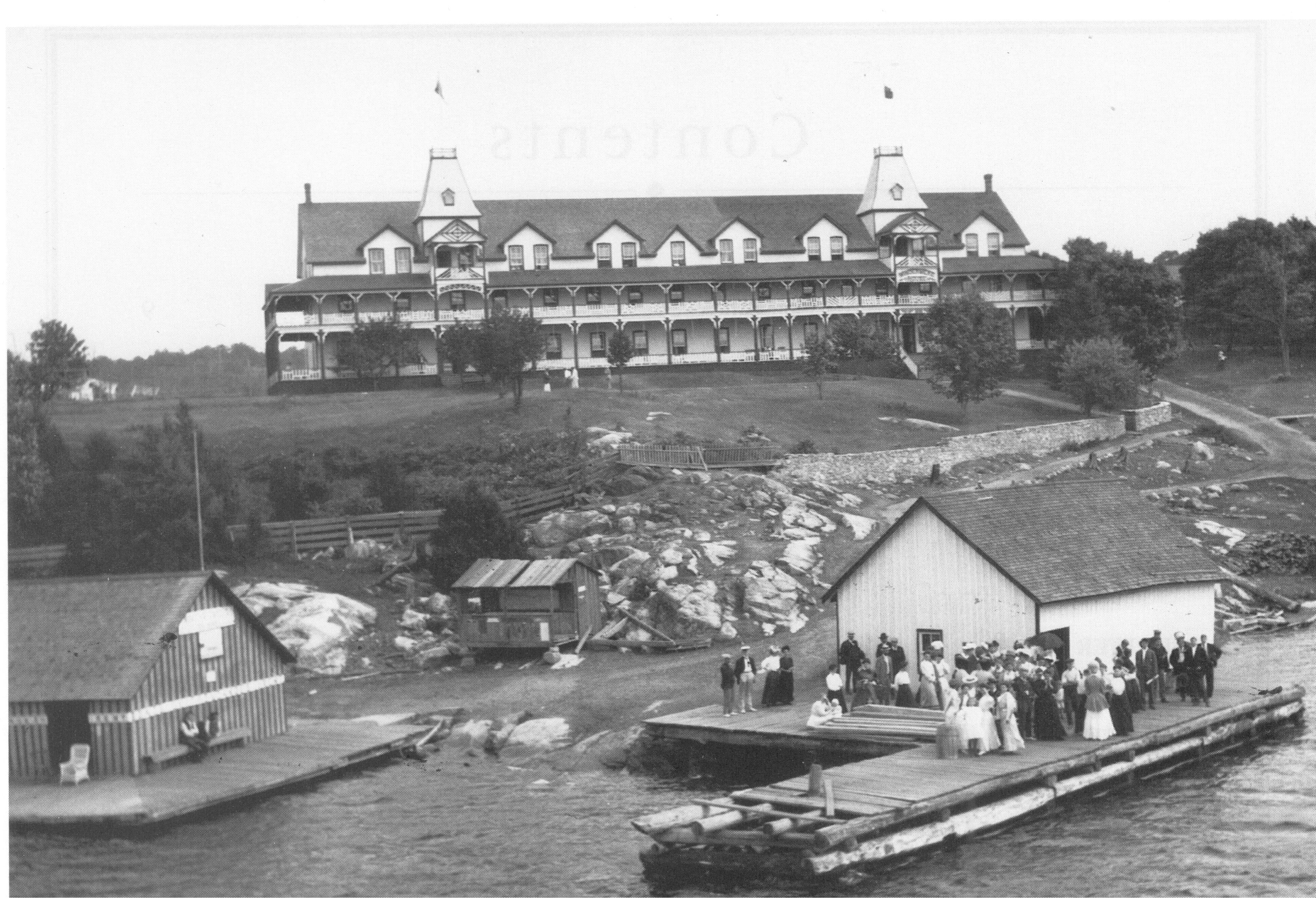
The Early Days - Windermere
Article by J. Patrick Boyer
In the 1860s, a Scottish settler from the Orkney Islands named Thomas Aitken arrived in Canada accompanying his sister, Ellen, and her husband, David Fife. The trio settled near Peterborough where widower Aitken met charming Mary Traill, a widow with two children.
In 1870 Aitken and Fife decided better prospects awaited in Muskoka where the province was giving land to homesteaders. They left Peterborough with their wives, Aitken having wed Traill. Choosing lots beside Lake Rosseau in fertile Watt Township – satisfyingly named for their fellow Scot and steam-engine developer James Watt – they cleared land and began to settle.
Soon A.P. Cockburn’s new steamer Waubamik, plying Lake Rosseau through the recently built Indian River locks at Port Carling, began calling along the lake’s eastern shoreline, using Aitken’s wharf and lakeside clearing for connections.
When other log houses clustered near those of the Aitkens, Fifes, and Francis Forge, another homesteader who arrived when they did, Thomas applied to Ottawa for a post office. The wee settlement, of which he now became postmaster, was named Windermere for England’s picturesque lake nestling amidst the hills of Cumbria.
By the mid-1870s, enterprising Thomas and hospitable Mary discovered facilitating a Muskoka vacation for paying visitors was their ticket to a more prosperous future. Using their Windermere house to board sportsmen from southern cities keen to fish Muskoka’s waters held promise.
Thomas was not a natural hotelier but Mary’s friendly manner contributed a welcoming character to the place. In addition, her cooking of tasty meals, attentive making of guests’ beds and relentless cleaning of the premises launched their small resort, now named Windermere House, as a renowned destination for vacationers.
Next door, David and Ellen caught on and opened their home as Fife House, increasing the village’s capacity to accommodate more southerners arriving for what was increasingly known as the “Muskoka cure.” The two homesteading families were creating an unexpected new economy for a district the government opened only for logging and farming.
Neighbour Francis Forge remained devoted to farming, which contented him fully, especially because he was prospering on his fertile fields. Thomas Aitken converted his cleared fields into Muskoka’s first golf course, with greens of neat squares.
In the wake of southerners arriving to fish and hunt came a second wave of city dwellers eager to enjoy additional northern lakeland sport, such as golf, tennis and watersports. Effecting the changeover to a moderated hinterland ethos, Mary Aitken’s refined tastes led to more elegant designs for the structures Thomas was continuously adding to Windermere House.
Muskoka’s first resort houses had typically been decorated, for an ambiance enjoyed by hunting party guests, with stuffed heads of trophy moose and deer. Under Mary’s influence, the dead animals disappeared, replaced by oil paintings of Cockburn’s steamers crossing Muskoka’s lakes.
Windermere House developed, as described by newspaper publisher George Boyer in Early Days in Muskoka, having explored the lake by canoe as a youth and visited the place, into “a commodious, well-appointed and attractive summer hotel with a continental reputation for fine service and friendly hospitality.”
In 1924 the settlement was incorporated as a village in Watt Township. Henry Longhurst, patriarch of another pioneering family, was elected first reeve. The two initial resorts continued to be owned and operated for generations by the Aitken and Fife families, while other resorts and marina facilities appeared and prospered and the golf course extended to 18 holes, their greens now circles.
The Aitken, Fife and Forge families created a settlement and significantly more and are memorialized as pillars of early Windermere by a stained-glass window in the village’s handsome stone church.
